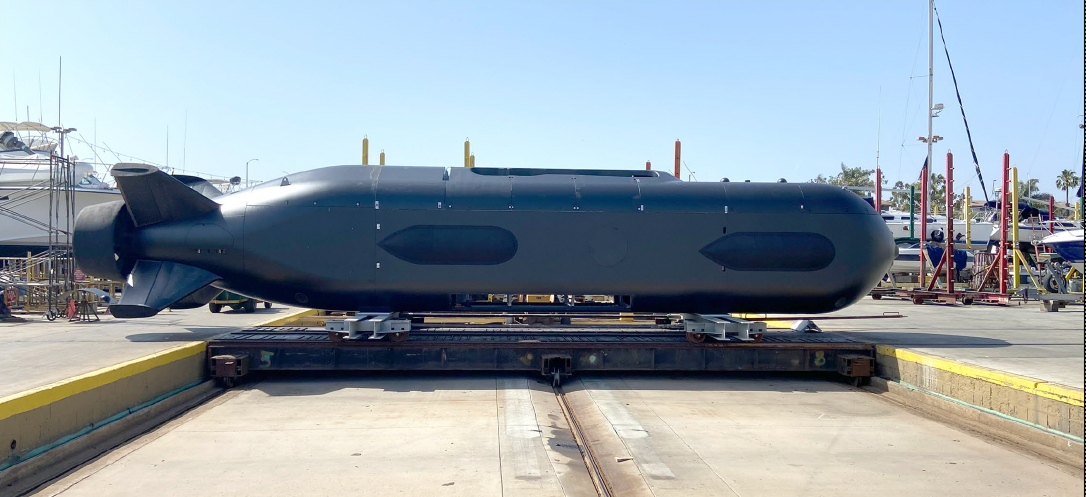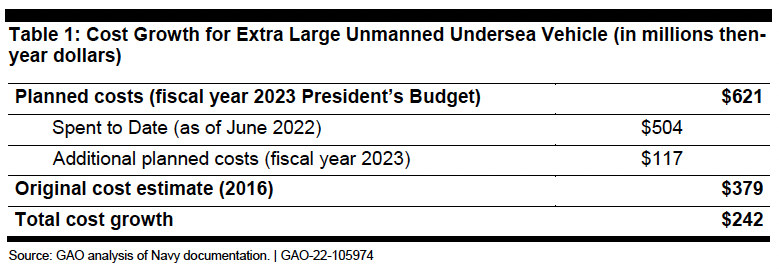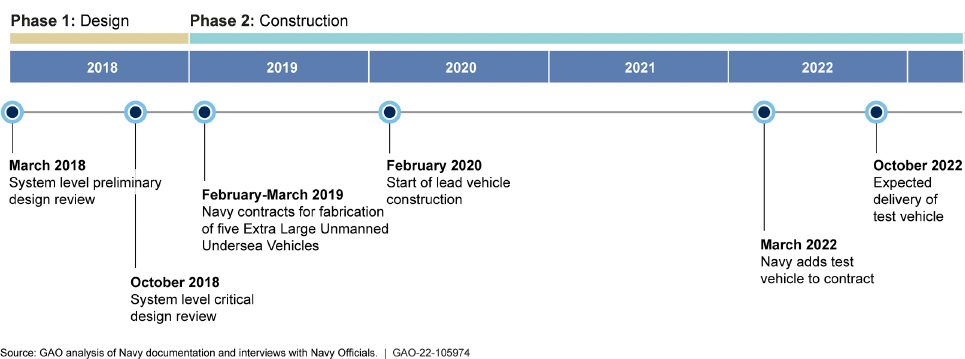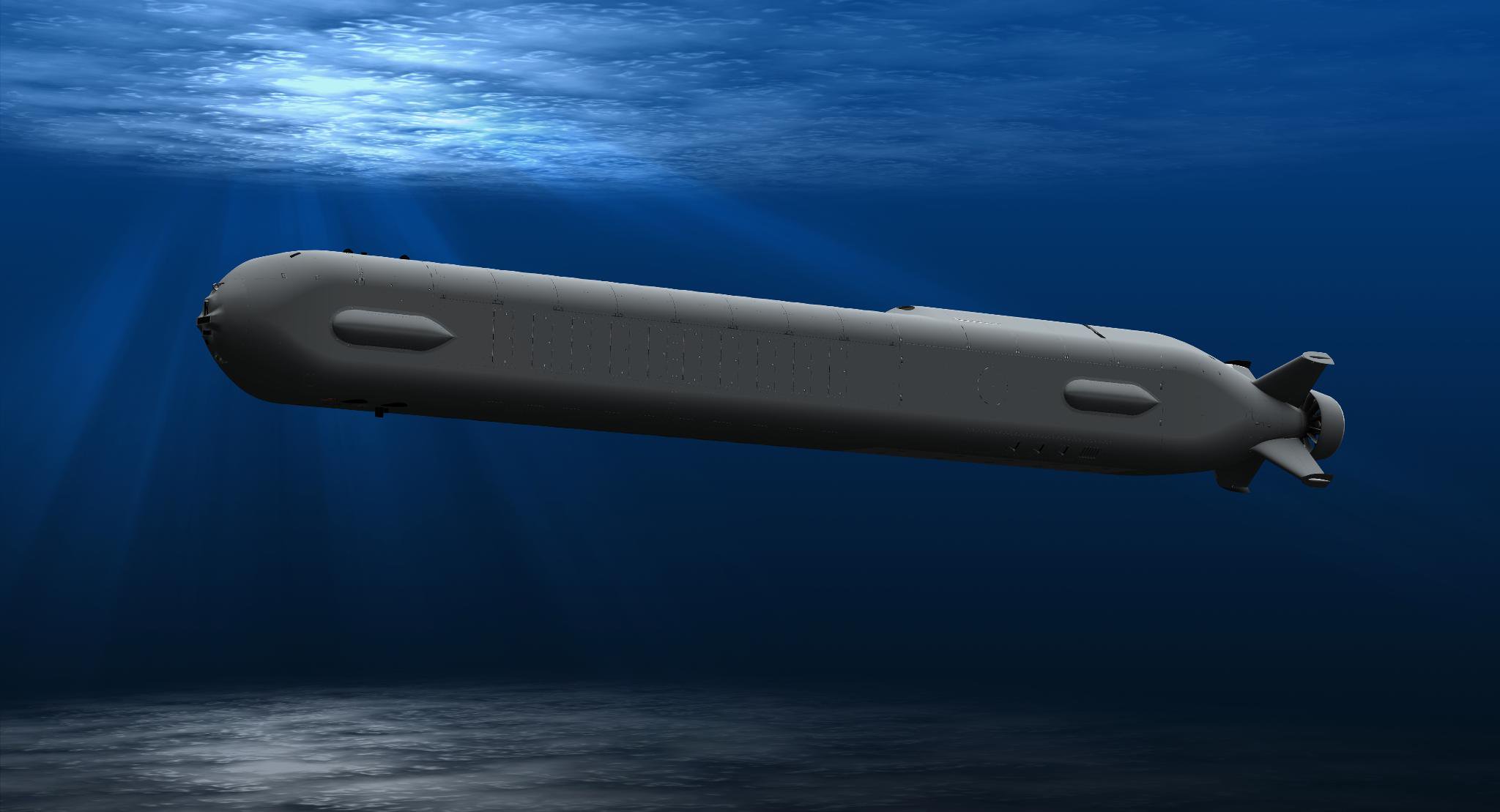
A program to develop an unmanned, 80-ton minelaying submarine is three years late and $242 million over budget, according to a Wednesday report from the Government Accountability Office.
The Navy’s Extra Large Unmanned Underwater Vehicle (XLUUV) prototype program was set to deliver five of the autonomous submersibles based on Boeing’s Echo Voyager as a rapid acquisition for the minelayers, according to the GAO.
The service contracted in March of 2019 with Boeing to build the five prototypes to meet a 2015 joint emergent operational need (JEON) for an advanced mining platform.
“The Navy considers these five XLUUVs to be prototypes, but is also planning to use these vehicles for military operations as soon as possible to fulfill the JEON. In other words, according to requirements documentation, DOD and the Navy are pursuing the XLUUV because it fulfills an emergent need for anticipated military operations,” reads the GAO report.
“The contract provided for delivery of the first vehicle within two years—that is, delivery to the Navy was scheduled for December 2020. The option for the fabrication and testing of the five prototype vehicles was a fixed-price incentive contract type. The ceiling price to fabricate all five vehicles is currently $281.5 million, including technical manuals and other documentation.”

Based on Navy cost data as part of the Fiscal Year 2023 budget request, the latest cost estimates for the five prototypes plus a $73 million test vehicle is $621 million.
The Navy added the test vehicle to the XLUUV program in March for the service to have a platform to work with while waiting for the final prototypes. The test vehicle will combine elements of Boeing’s Echo Voyager and the final XLUUV without the modular payload bay, reads the GAO report.
The GAO blamed the cost overruns on the “Navy’s decision to not require the contractor to demonstrate its readiness to fabricate the prototype XLUUVs, as called for by leading acquisition practices. Without knowledge to inform decision-making, delays ensued as the contractor implemented updates, revisions, and alterations after the Navy contracted to purchase the five XLUUVs in February and March 2019, according to Navy officials,” reads the report.

Questions on the delays sent by USNI News to a Navy spokesman were acknowledged but not immediately returned. A Boeing spokeswoman referred USNI News to the Navy when asked for comment on Wednesday.
A defense official told USNI News on Wednesday that much of the delay was due to COVID-19 pandemic-related production issues. The lack of batteries, qualified welders and titanium were bottlenecks in the XLUUV production process.
With the delays, “the delivery of the first XLUUV is now expected to be over 3 years late. The contractor originally planned to deliver the first XLUUV in December 2020 and all five by the end of calendar year 2022,” reads the report.
“Navy officials told us that the contractor has tentatively targeted February 2024 to June 2024 for delivery of all five vehicles.”
Since the 2019 award of the XLUUV, the Navy has given few details as to the role it has planned for the XLUUV or details of the design.

According to the GAO report, “the body of the vehicle is comprised of four sections or modules. This modularity allows some of the inner components, such as the batteries or payloads, to be added or removed when the vehicle is in the water … the Navy could add two additional batteries to the XLUUV if, for example, it needs more power for a mission due to increased range or payload requirements. Also according to Navy officials, the Navy plans to begin exploring the development of a universal payload module, which could carry many types of equipment for a variety of missions.”
The Navy has a history of turning unmanned prototype programs into operational assets. After an extended testing period, in 2009 U.S. Central Command took possession of five Navy RQ-4A Broad Area Maritime Surveillance Demonstrators (BAMS-D) and used them extensively in the Middle East for surveillance operations.





